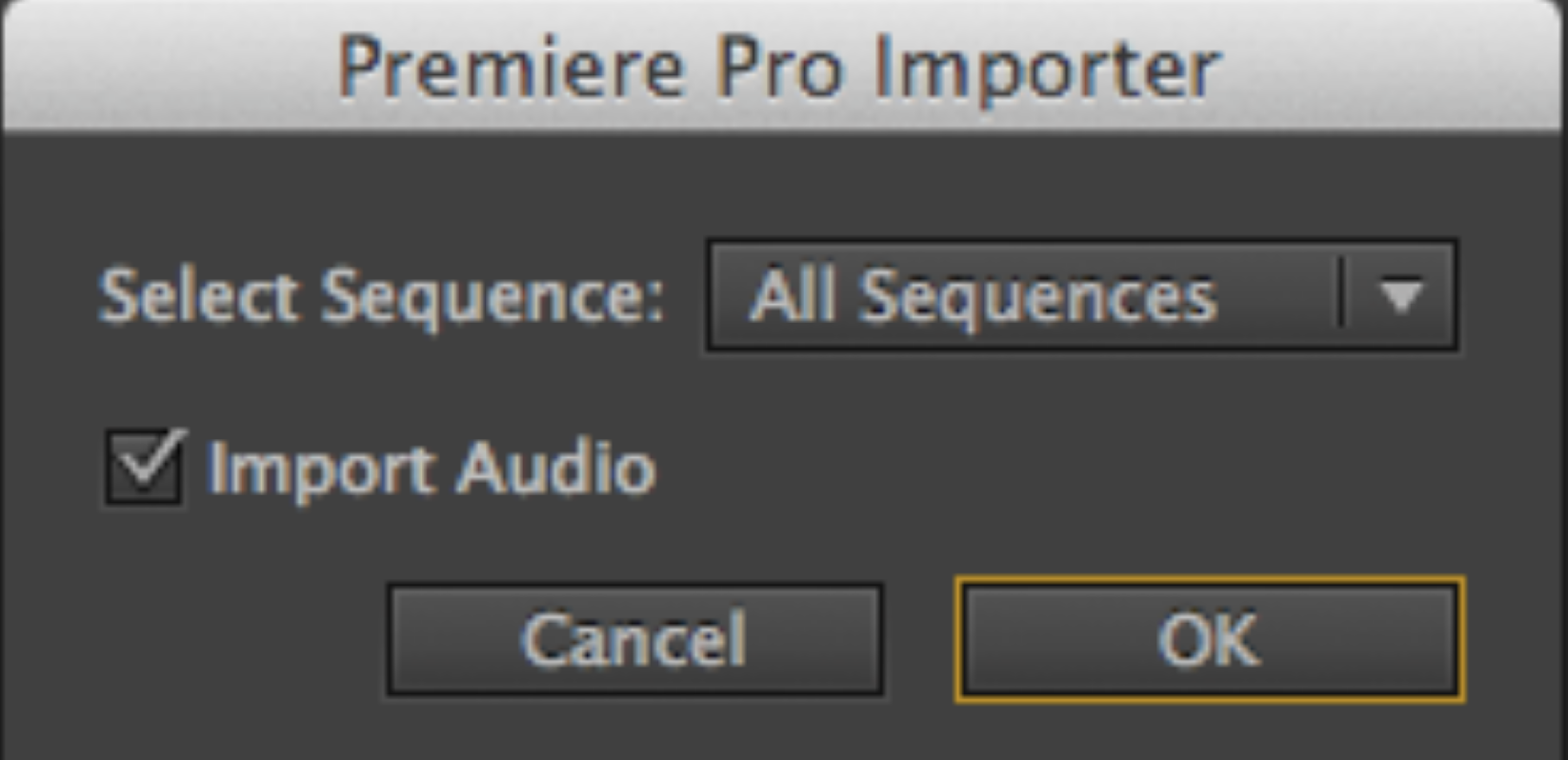| ||
Next Create the .aaf go to >File>Export> | ||
Export as .aaf | ||
Choose where to save the .aaf and title it keeping the .aaf extension. Don't worry what the Export Settings Drop down states. We set the "Options" correctly | ||
The export when finished will look like this | ||
Deliver this folder and the DNxHD quicktime to the colorist or if you are color grading your own project import the .aaf into Adobe Premiere |
| |
See this wiki on how to import the .aaf into Adobe Premiere When project is in Adobe Premiere save the project and then import the Adobe Premiere Project into After Effects | Adobe Premiere Pro - How to import an .aaf and mediafiles from AVID (same workflow for .xml too) | |
Open After Effect and choose Import>Adobe Premiere Pro Project | ||
| A dialog box opens, where you have the choice to bring in all the sequences, select a sequence and whether or not you want to import audio. | ||
| Click OK, and a folder with the referenced media and composition appear in the project. Note, Premiere sequences become compositions in After Effects. | ||
Double click on the composition to see the timeline with all your layers from Premiere Pro. |








